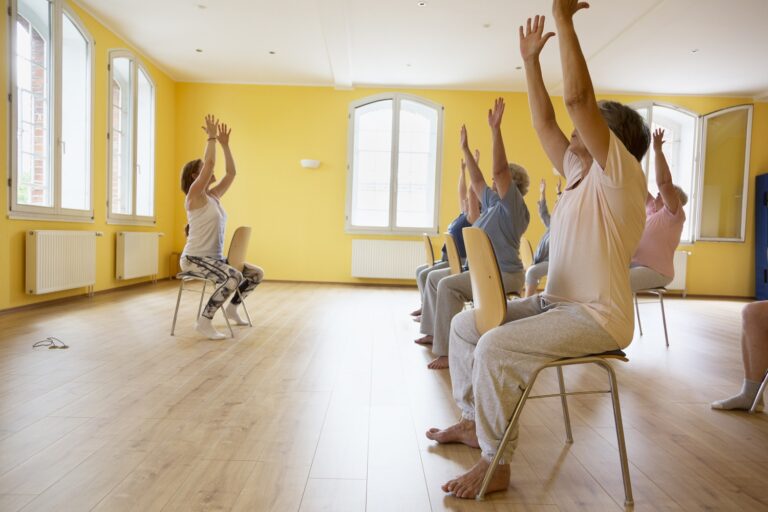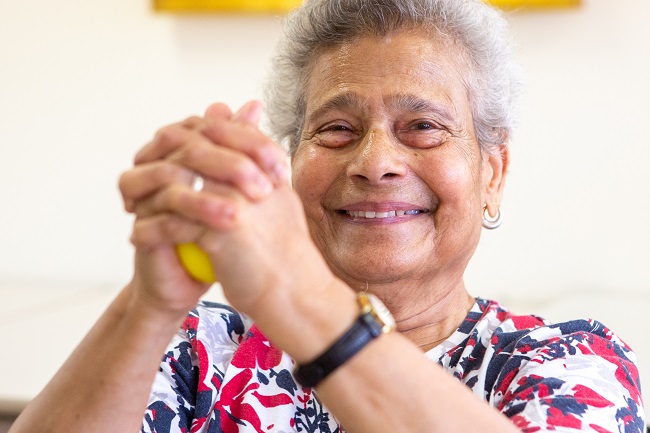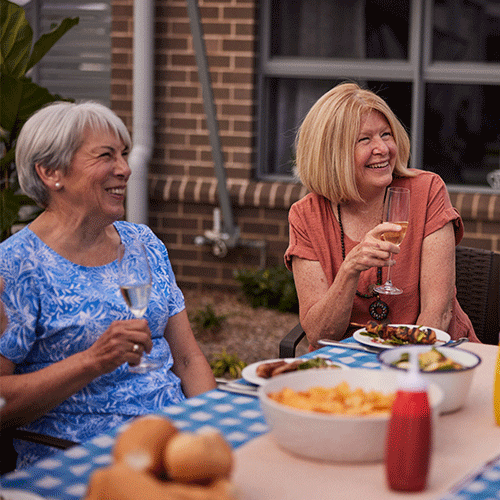Yoga for seniors: the best types to try (and why it’s good for you)
As you age, keeping active and mobile can become somewhat challenging. Fortunately there are numerous ways to keep yourself in great shape, both physically and mentally.

Yoga is a great way to help with building strength, calming your mind, and improving your overall health and well-being. It’s also incredibly versatile, with a range of different styles to suit different needs, age groups, fitness levels and preferences.
The best types of yoga for seniors
You can start yoga at any age, just be sure to get the all clear from your doctor beforehand. Here are some of the types of yoga best suited to older adults.
Hatha
Hatha is a generic term for yoga that concentrates on postures, but in most cases it's a bit slower. A hatha yoga sequence is usually a series of slow-paced seated and standing poses and the focus is on stretching and breathing. It's generally considered a good option for beginners (and older adults) because you won't be going a million miles an hour or trying to do gymnastics-type poses. Because it’s slower it allows the instructor more time to offer you support and guidance.
Gentle yoga
While this isn't a formal style per se, it's commonly used to describe classes which are - you guessed it - more gentle. Look for "gentle yoga" or "gentle hatha" if you have mobility issues or suffer from arthritis. As the name suggests, it won't be too fast or vigorous, and you probably won't be twisting into a noodle. The poses will be a bit simpler and the pace less demanding.
Chair yoga
Chair yoga is gaining increasing popularity as it bypasses the need to get down on the floor - a huge win if you have mobility or balance issues. Many older people enjoy chair exercise without using the lower body too much and chair yoga is no different! In fact, many yoga poses can be easily modified to be done from a chair, whether it's a spinal twist, chest opener or forward bend. You'll be surprised by how much yoga you can do from the safety of a chair!
Kundalini
Known as the "yoga of awareness," kundalini is a wonderful option if you're looking for a more holistic and spiritual yoga practice. It combines physical postures, breathing exercises, meditation and chanting and classes often have a wonderful community feel.
Yin
Yin yoga is a much slower style of yoga that focuses on holding poses for longer periods of time (usually 3-5 minutes). In yin you work on stretching your fascia (deep connective tissues) and it's a very meditative practice. It can be great for seniors as you use lots of props, like bolsters and blocks to support you in the poses - very helpful if you have arthritis or other chronic conditions. It's often so relaxing that it's not unusual for people to doze off in yin yoga classes!
Remember, regardless of the form of yoga you try, it's always your practice and you can modify it to suit your needs, whether that's slowing things down or skipping a pose altogether (e.g. if you have back pain) or using props like a block to help you.

8 benefits of yoga for seniors
1.Improves balance
As you get older, balance issues can become more prevalent, leading to falls and other related injuries. A study commissioned by the Australian Government’s Institute for Health and Welfare found the rate of head injuries from falls by older Australians has nearly doubled over the past decade.
A simple way to prevent falls is to introduce yoga into your weekly routine. Many yoga poses and exercises can assist with improving your balance, focus, range of motion, movement and coordination which helps strengthen your muscles and prevent the likelihood of falls occurring.
2. It includes meditation
Many of us know firsthand how rejuvenating yoga can be for the body, helping us to stretch and release tension after a stressful day. Contrary to popular belief though, yoga is a lot more than physical exercise. It involves movement, but the true focus is on utilising the body and breath to calm the mind. Whether it’s sitting in silence at the beginning or end of class, or practising mindful movement, it’s a great way to incorporate some meditation.
There are many benefits to regular meditation, but one emerging finding is improved brain health with the potential for regular meditation to actually change the structure of your brain. One study showed that over time, regular meditation can decrease the size of your amygdala, the part of the brain that signals our brain to turn on the stress response in the body. This means we can perceive situations differently and avoid becoming stressed in the first place!
3. Keeps your heart healthy
Improved circulation, lower blood pressure cholesterol levels – a yoga routine to start your day can be a great way to keep your heart healthy. Research published in the European Journal of Preventive Cardiology found yoga may lower various cardiovascular risk factors.
4. Make new friends
Maintaining social connections or making new ones can be difficult as we get older. Integrating yoga into your life can be a great way to try new things and build a whole new network of friends.
Whether it’s a class at your local studio, beach or park, attending a yoga class is an excellent opportunity to meet like-minded people, be social and be part of your local community all whilst staying active. It doesn’t matter whether you’re a beginner or a yoga master, organised classes cater for different age groups, skills and fitness levels.
Discover how to make and maintain connections as you get older.
5. Natural mood booster
Not only does it give you time out to think, reflect and engage your mind and body, yoga provides countless mental health benefits. Studies have found implementing yoga practices can help reduce stress, anxiety, depression and enhance overall well-being.
Yoga can be an effective stress-buster because it combines movement with breathing exercises, which are both well-documented ways of calming the mind and body. Yoga encourages one to relax by slowing the breath and focusing on the present, shifting the balance from the sympathetic nervous system and the flight-or-fight response to the parasympathetic system and the relaxation response.
So next time you are feeling stressed, incorporating a downward facing dog or cobra pose into your daily routine may be just the thing to get you back on track.
6. Improved sleep
If we don’t take time to switch off at the end of each day it can sometimes wreak havoc on our sleeping patterns, leaving us tossing and turning throughout the night and waking up tired the next day.
A study of 120 people has found seniors who practiced specific yoga postures before bed time improved fall-asleep time, sleep duration and experienced a greater feeling of being rested in the morning.
7. Keeps your mind sharp
As time passes, changes may occur in your brain that might affect your memory and thinking. A 2016 Australian Government study found dementia affected 1 in 10 people aged 65 and over. Regular exercise, whether it’s walking or yoga, goes a long way towards maintaining and improving your memory and cognitive skills.
One of the benefits of yoga is that it can give you the gift of training your brain to focus, instead of multi-tasking. A study at Stanford University found that chronic media multi-taskers have weaker cognitive abilities than those who are more likely to single-task. By focusing on your breath and staying present in poses, yoga can also help train your mind to be more focused and clear as well.
8. Stay fit and healthy
Getting fit and keeping your body in shape doesn’t have to always mean running laps of the park or sweating at the gym, a report published by the European Journal of Preventative Cardiology found yoga may provide the same aerobic and cardiovascular benefits as exercises such as brisk walking or biking.
Unlike other weight-bearing exercises like running or tennis, yoga is gentle on your muscles and joints making it an excellent choice for older adults looking to improve their physical health.
Note: Whenever you start any kind of new exercises, it is important to listen to your own body and speak to your local GP before undertaking a new exercise routine.

Stay active in retirement
IRT has been building retirement villages for more than 50 years. We have more than 30 retirement villages in NSW, Qld and the ACT. Living independently in a community is a great way to stay active with various lifestyle activities on offer.
Find out moreYou may also like
10 benefits of exercise for mental health
We all know that exercise is important for our physical wellbeing, but have you considered the benefits of exercise for your mental health?
How to choose where to live in retirement
Retirement is something we are all working towards but there are plenty of things to consider before getting there – including where to live.


